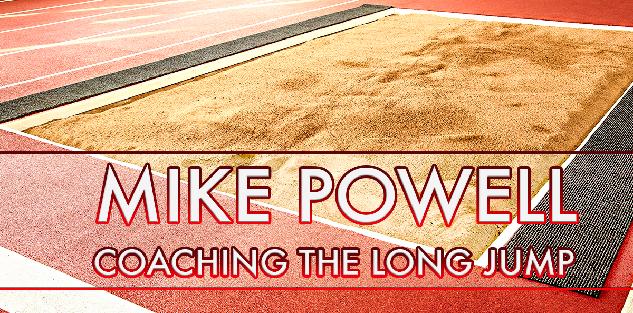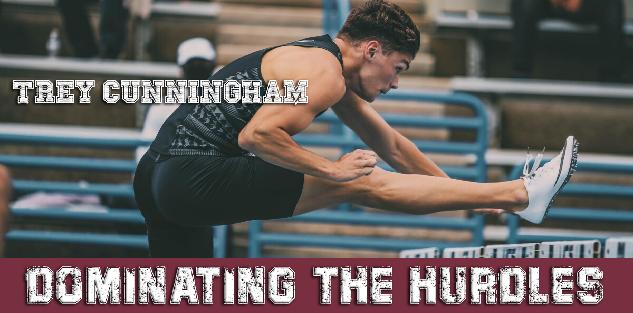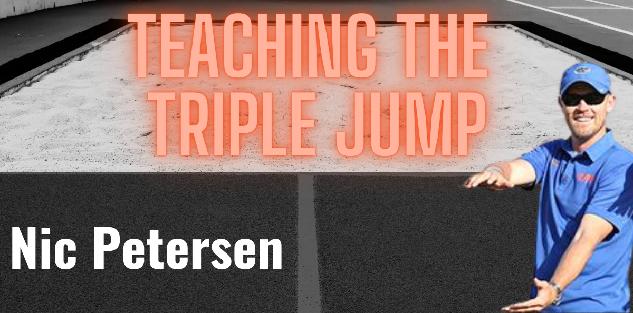Featured courses
- The Ultimate Guide to Coaching Track and Field by Jackson Chlebowy
- How TCU Coach Khadevis Robinson Builds Mental Toughness for Big 12 Track by William Markey
- Two Points of Focus When Coaching and Training Hurdles by Grant Young
- Four Keys to Maximize Winning Potential in a 400m Race by Grant Young
- Three Lessons Every Distance Running Coach Should Know by Grant Young
- Olympic Medalist Jasmine Moore’s Triple Jump Approach Technique Keys by Grant Young
- Build Strong Triple Jump Foundations with 3 Key Drills by William Markey
- Two Cues to Help With Track and Field Relay Handoffs by Grant Young
- Four Shot Put Drills to Help Develop Your Athletes by Grant Young
- Three Training Tips For Coaching 400m Runners by Grant Young
- Four Tips for Teaching the Javelin Throw by Grant Young
- 3 Pole Vault Check Points From Legendary Kansas Coach Tom Hays by Grant Young
- Two Valuable Hammer Throw Training Tips by Grant Young
- 3 Must-Try Offseason Shot Put Drills by William Markey
- Four Essential Tips For Coaching Track Relays and Sprints by Grant Young
- Florida Gators Coach Nic Petersen’s Two Keys for Teaching the Triple Jump by Grant Young
- Three Effective Drills for Improving the Long Jump by Grant Young
- Three Drills for Sprinters That Track Coaches Swear By by Grant Young
- Four Pole Vault Drills All Track and Field Coaches Should Know by Grant Young
- Explosive Track and Field Training to Level Up This Summer by Tyler Rathke
- Throwing Secrets: The Entry by Tyler Rathke
- How to Find an Endurance Athlete’s Proper Training Pace by Grant Young
- The Technique Behind Mykolas Alekna’s Discus World Record by Grant Young
- How to Build a Sprinter's Training Regimen by Grant Young
- How to Teach the Glide Shot Put by Grant Young
- Three Hurdle Drills All Track Coaches Should Know by Grant Young
- How Distance Running Coaches Can Get the Most Out of Their Athletes by Grant Young
- The Technique Behind Mondo Duplantis' Pole Vault World Record by Grant Young
- How to Coach Weightlifting For Increased Speed and Acceleration by Grant Young
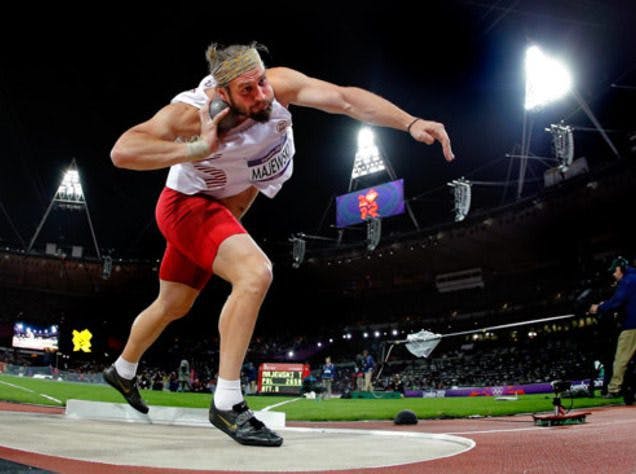
How to Teach the Glide Shot Put
- By Grant Young
There are two prevailing techniques for the shot put: the spin and the glide.
For those who are unaware, let’s briefly discuss the fundamental differences between these two techniques. A thrower who utilizes the glide technique will typically have a much wider base when establishing their foot positioning, and will also have a significantly deeper torso position than the spinner.
A thrower who employs the spin technique, however, will be a bit more upright during their standing throw.
While the throw’s initiation will come from the left side with both techniques (given the thrower is right-handed), the thrower’s left arm travels differently in each movement. And this is where a thrower’s build, athleticism, and natural abilities should help decide which technique is best for that athlete.
The glide technique is simpler to learn and execute, and places less physical demands on the athlete compared to the spin. Gliding typically allows for greater stability and balance during the throw, which is crucial for young athletes still developing their strength and coordination.
And there are few better coaches of the glide technique for developing athletes than René Sack.
Coach Sack has been the German national coach for the women’s discus since 2016. Before that, he was also a national junior coach for the discus throw and hammer throw. He has coached athletes at Halle Olympic Training Center for more than a decade, including athletes such as World Championships discus medalist Nadine Müller.
As an athlete, René competed in the shot put with a best of 19.84 meters, placed second at the German championships, and represented Germany at the World University Games and several European age group championships.
Coach Sack’s ‘Glide Shot Put’ course by ITCCCA reveals all the keys that he used as a world-class athlete and as a coach to master the glide shot put. We have pulled some of his best lessons so that you can use them as a blueprint for teaching the glide shot put to your own developing athletes.
Technical Progression
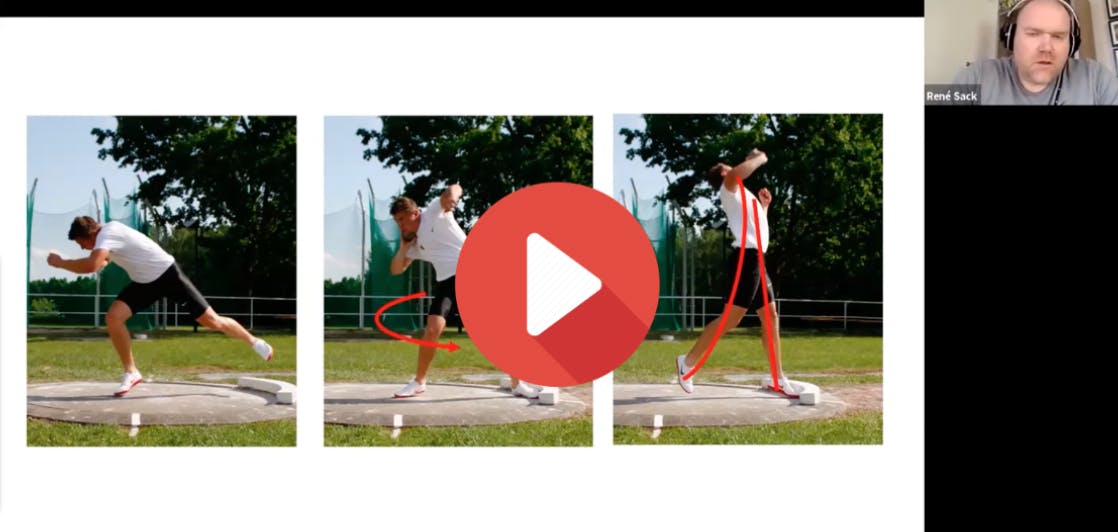
Coach Sack likes to think of the glide shot put’s technical progression training as a pyramid. At the bottom of the pyramid’s base are the basic and special throws.
These are all of the medicine ball throws, kettlebell throws, and the many variations of those types of throws (such as doing them standing, sitting, and with various rotational elements). The goal for these is to make your athletes get a basic feel for various aspects of the throw, as well as provide core and strength stability training.
Coach Sack says the next rung of the pyramid should be implement-handling/standing throw training, which will break down the glide technique into different segments that will give the athlete a better idea of what they should be feeling in each phase of the movement.
The next rung up in the training pyramid will be to add throws with pre-acceleration, which will help to build on rhythm and help the athlete get a good feel for what their base should feel like as they through their throw.
And at the top of the pyramid is the competition technique, which simulates what the complete technique will be when the actual competition is taking place.
Implementing a training regimen that includes all four rungs of this pyramid, and that goes in this gradual progression from basic exercises and throws to full-on competition throws is not only the safest but the most effective way to help develop your athlete’s glide shot put technique.
Where To Put
The next glide shot put aspect that Coach Sack broaches is where to position the actual shot on one’s body during the throw.
Coach Sack notes that the positioning between the glide and the spin throw is quite different. For the spin throw, most American coaches direct their athletes to hold the shot near the back of their neck.
If we were to envision the neck as a clock, with the adam’s apple at six o’clock and the back of one’s back at twelve o’clock, Coach Sack notes that most spin coaches would have their athletes holding at about ten o’clock.
But the glide technique is vastly different. Coach Sack suggests that athletes should be holding the shot at about seven o’clock on their neck, in a position where it sits above the athlete’s clavicle bone and tucked beneath their chin.
This is because if the right leg is in the right position during the glide shot’s execution, the chest will open up, which will naturally cause the arm (and shot) to separate from the body. And if the shot is being held too far back then this might cause the arm to enter some uncomfortable positions and take away from the throw’s power.
In addition, holding the shot at ten or eleven o’clock will force the arm to remain flexed and tight throughout the throw, rather than the throw starting out relaxed at the throw’s beginning.
Lifting Drill
Coach Sack believes that the most effective powerlifting exercise for glide shot put throwers is the power clean.
For those who don’t know, the power clean is a highly technical exercise that involves catching a barbell in a partial squat, or "power position", above parallel to the ground. It’s also an Olympic weightlifting movement often used to develop whole-body explosive strength and power, and using it consistently brings benefits such as boosting explosive power development, enhancing body composition, and improving overall coordination.
Many aspects of the power clean relate to the actual glide throw, in terms of which muscles are being used at what phases of the lift. This is why the power clean should be an essential part of the workout regimen of any athlete who uses the glide technique (or even the spin technique).

